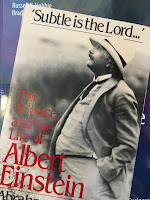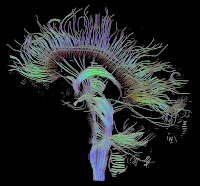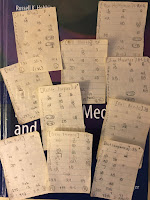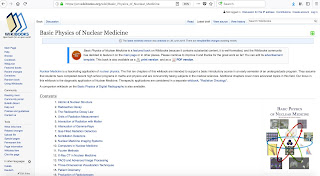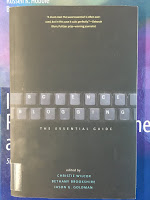 |
| Science Blogging: The Essential Guide, by Wilcox, Brookshire, and Goldman. |
By bringing together some of the most experienced voices from around the science blogosphere, we hope this book will have something to teach everyone. Whether you’re just getting started, have some blog posts under your belt, or are looking for fresh inspiration, you are not alone. The science communication community may seem overwhelming, but it’s friendly. Dive in and show us what you can do. Seriously. Tweet us and show us your stuff. And use our hashtag, #SciBlogGuide, and find us online at http://www.theopennotebook.com/science-blogging-essential-guide.I enjoyed Science Blogging, but oddly I didn’t feel connected to what many of the authors discussed. What you are reading now is less a science blog and more an auxiliary resource for the textbook that Russ Hobbie and I wrote: Intermediate Physics for Medicine and Biology. My goal is to provide materials that help instructors use the book in their classes, and extend and update topics that readers of the book are interested in. I view this blog as being similar to the solutions manual and the errata: it augments the book. The closest Science Blogging came to my blog is in the last chapter, “From Science Blog to Book,” by Brian Switek. But his chapter was primarily about using a blog as a springboard to writing a book, and only at the end of his chapter did he add that “there’s no reason to stop blogging when your book comes out.” I did the opposite. My blog began after Russ and I published the 4th edition of IPMB, and my goal was to improve sales. Has it worked? It’s hard to say, because our sales have never been spectacular. I hope it has had some impact.
Matt Shipman’s chapter on “Metrics” inspired me to look into the statistics for my blog. The post with by far the most page views is Frank Netter, Medical Illustrator. While I liked that post, I don’t know why it has more than three times as many page views as the next most viewed entry. In fact, I see no correlation between the number of page views and what I consider quality or relevance.
Bethany Brookshire wrote a chapter on “Science Blogging and Money.” I like money as much as the next guy, but I don’t subject my dear readers to ads. Hobbieroth.blogspot.com is add-free. There is one exception: each blog post contains a reference to IPMB. I guess that is a sort of advertisement.
Several authors talked about building a following using Twitter. I don’t tweet, but should I? Do you want to hear about IPMB several times a day? I don’t think so. I’ll continue posting once a week; every Friday morning, like clockwork. By the way, what’s a hashtag? I always thought I was a hep cat, but I guess not.
My favorite chapter was Ed Yong’s essay about “Building an Audience for Your Blog.” Accumulating a large following is not my goal; I am more a citation man than a page view man. Yong’s advice is that “you have to have something worth writing about, and you have to write it well.” That sums it up nicely. I think that physics applied to medicine and biology is something worth writing about; I hope I write it well. Yong also writes “picture your ideal readers in your head: who are they?” While I hope anyone interested in biological physics or medical physics will find my blog useful, I don’t write it for such a broad audience. I write it for the students and teachers using Intermediate Physics for Medicine and Biology. And, I write it for myself. I hope you enjoy it. I do.
